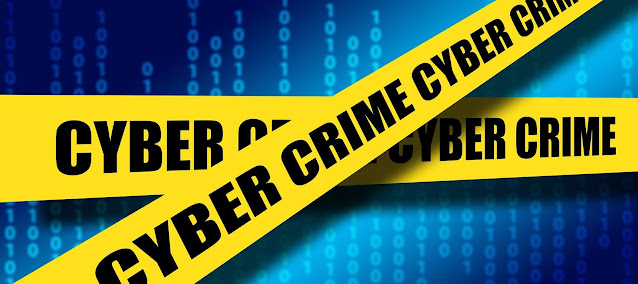Cybercrime is a criminal activity that involves a computer, networked device, or a network. It is a criminal offense and is punished by the law. The computer may be used in the commission of a crime or it may be the target. Cybercriminals use different strategies and programs to attack the computer and systems. Cybercrime may threaten a person or nationals security and financial health. The major cybercrime includes stealing sensitive personal data, identity theft, and online harassment, and invasion of privacy. The most used terms and typology of cybercrime are listed below:
 |
| Cyber Crime |
Fraud: Cybercrime in which that involves deceiving a person so as to gain important data or information is termed as 'Fraud'. It can be done by destroying, stealing, altering, suppressing any information to secure unlawful gain.
Identity theft: Cybercrime in which that involves stealing personal data like passwords, bank accounts, credit cards, other social security identification cards are termed as 'Identity theft'. Identity theft scam is a type of fraud that involves using someone else identity to steal someone's financial or intellectual property. The scammer tricks someone into giving access to their identity that maybe through remote access scams.
Hacking: Hacking is commonly used terminology in cybercrime. It involves the partial or complete acquisition of certain functions within a system, network, or website. Corporate and government accounts are mostly targeted, there are various methods and programs to carry out hacking.
Scamming: It can be done by offering computer repair, network troubleshooting, pretending to provide IT services.
Social Engineering: Cybercriminals make direct contact through phone calls, emails, or even in a person and establish relations to benefit themselves later. They may be an individual or a company.
Child pornography: It is a $3 billion dollar industry and over 10,000 sites on the internet provide access to child porn.
Cyberbullying: It is a form of bullying carried out over the internet. It is very prevalent in the virtual world.
Spamming: It uses electronic messaging systems, most commonly emails for sending malware, fake links, harmful websites, malicious programs offering promos, deals, or other attractive provisions to deceive users.
Phishing: Phishing is a fraudulent attempt to obtain sensitive information by disguising oneself as a trustworthy entity in an electronic communication. Email Spoofing is used to extract confidential information such as credit card numbers, social security numbers. Users believing as legitimate may enter personal information and thus exposing their personal information.
Invasion of privacy: It is the intrusion into the personal lives of others. This may cause and can give the person feeling that their privacy has been invaded. An invasion of privacy occurs when there is an intrusion upon their reasonable expectation to be left alone.
Mal-advertising: By clicking the advertisements users are redirected to fake websites and files carrying viruses and malware.
Computer viruses: Viruses can spread through removable devices and the internet. It is used to gain unauthorized access to the system and steal important data.
Ransomware: It is one of the most destructive malware-based attacks. It enters your computer network and encrypts files and information through public-key encryption. And the attacker usually demands money to decrypt it.
Botnets: It is controlled by remote attackers called bot herders. They usually attack information technology infrastructure.
Cyberstalking: It is following a person online anonymously. The stalker will follow the activities of the person mostly women and children. The repeated use of electronic communication to harass or frighten someone, for example sending threatening emails.
Software piracy: Illegally reproducing the original products and earning income by it without the consent of the original developer and companies is term as 'Software piracy'. Songs, books, movies, albums, software are pirated in the market.



0 Comments